If you’re wondering whether a block of your favorite chocolate will cause your skin to break out, you’re certainly not the only one.
Yes, chocolate has been studied as a possible contributing factor to acne ever since 1969, and many studies have suggested that a few components found in chocolate can, in fact, cause acne.
Multiple studies agree that dairy, sugar, and even cocoa found in chocolate can cause acne in some people; however, as per usual, there is much more to it, and the answer to this is still not clear even after decades of research.
In this article, I will try my best to explain what causes acne and how does chocolate cause acne (in some people).
I will also share my personal conclusions from experimentally cutting chocolate out of my diet in an attempt to get rid of acne.
So, let’s jump right in:
Does Chocolate Cause Acne?
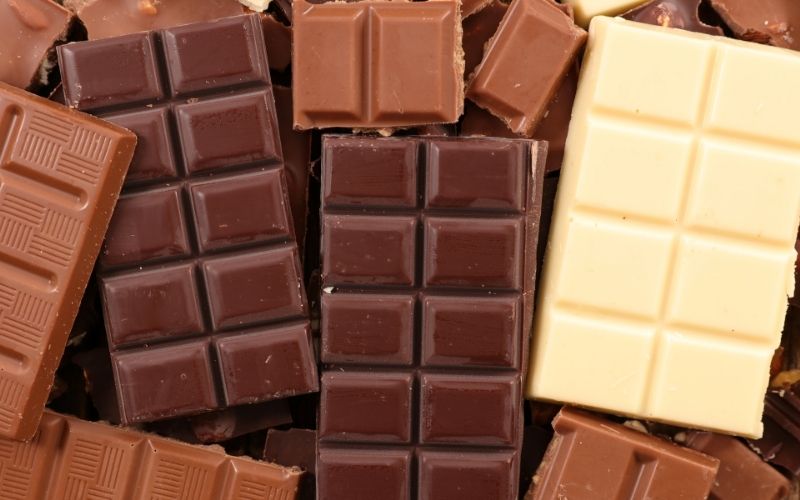
Chocolate does cause acne… in some people. Let me explain from the very beginning.
Mainly, acne is caused by these 4 factors:
- Overproduction of facial oil. This fatty substance, known as sebum, begins by blocking your pores.
- Abnormal skin cell shedding. The skin cells in your pores stick together, further contributing to those blockages.
- Inflammation. The immune response is what turns a simple blockage into a painful pimple. Inflammation can arise from too much sebum and too many skin cells, but, confusingly, it can also cause too much sebum and too many skin cells.
- Microbial imbalance. Too much of one type of bacteria living on the skin (or not enough of another) can exacerbate the inflammatory response. For example, an overgrowth of the acne-causing bacteria can cause acne, but the acne-causing bacteria doesn’t necessarily cause acne on the skin until there is an overgrowth.
So why isn’t chocolate or any other food on this acne-causing list?
Because chocolate, or more specifically – components found in chocolate are often the indirect culprit that leads to acne breakouts through a long process.
Therefore, I am going to divide the most dominant components in chocolate and try to explain how each one could be triggering acne breakouts for some people.
Sugar
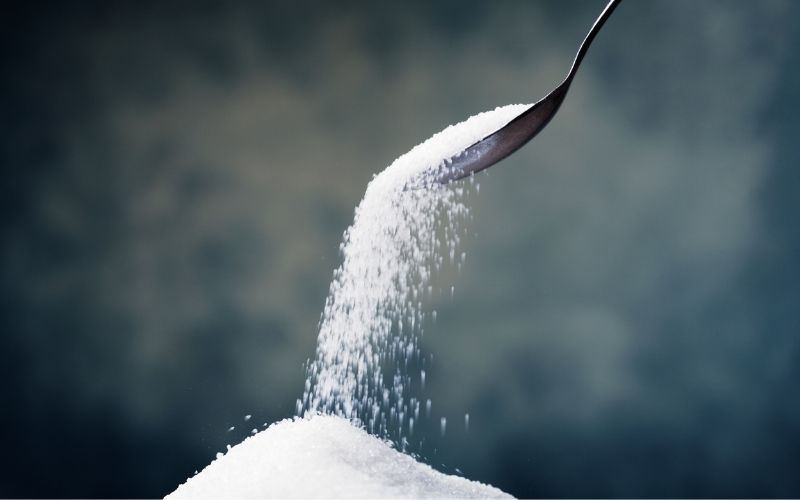
One study found that after ten weeks of eating a diet that balances blood sugar, patients not only saw improvements in their acne, but their sebum-producing glands also shrunk.
Another study found that eating a blood-sugar-balancing diet changed patients’ sebum composition and reduced their number of pimples.
To understand why this happens, we need to take a quick look at a master hormone: insulin.
Every time you eat, your pancreas releases insulin. This helps to get the sugar (glucose) out of your bloodstream and into your cells so that they have the energy to carry out their important functions.
Insulin is essential – but we can run into problems when too much is released too often.
This is because excess insulin increases the production of androgens, a group of hormones that includes testosterone.
When testosterone from the blood comes over to the skin, it gets converted to a much more potent form, called dihydrotestosterone (DHT).
DHT then kicks your sebaceous glands into overdrive and causes them to produce excess oil, which leads to oily skin (the first cause of acne mentioned above).
It also triggers the hyperkeratinization process also known as abnormal skin shedding (the second cause of acne mentioned above), which clogs your pores.
As I also mentioned above, clogged pores are the first stage of acne – every acne spot starts with a small clogged pore.
The more testosterone you have, the more DHT will be produced, too.
Testosterone kicks your sebaceous glands into overdrive, which winds up making your skin more oily and more acne-prone.
Moving on to the second component found in chocolate:
Dairy
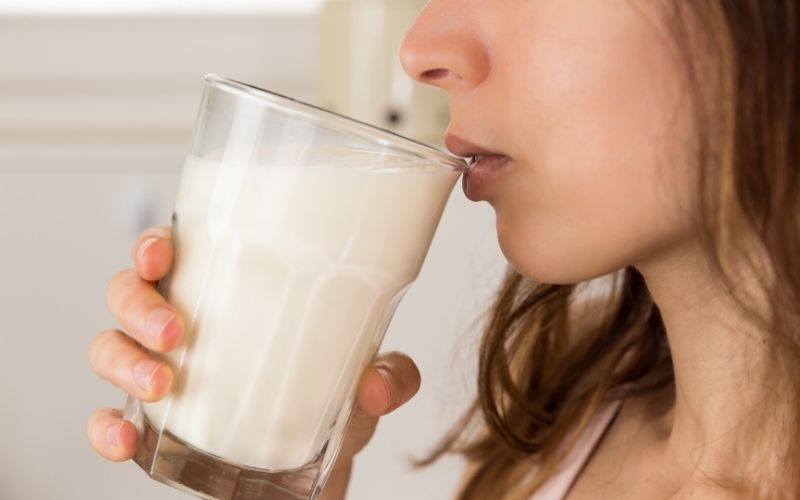
Dairy causes acne, right? You may be surprised to learn that, well, it depends. The research in this area is far from conclusive.
As part of the Nurses’ Health Study II, researchers asked 47,355 women what they ate as teenagers and whether they had acne.
Based on their responses, it was determined that the more milk they drank, the more likely they were to have acne as a teen.
But, as with any research, we need to apply critical thinking to the results. There are two issues with this sort of study:
1) People are notoriously unreliable when remembering what they ate. Can you recall what you had for breakfast a week ago, let alone 20 years ago?
2) Correlation does not equal causation. The increased rate of acne in milk-drinkers could be down to chance or down to something else entirely.
You may notice that the sun has risen when you wake up – but that doesn’t mean your waking-up is making the sunrise! And yet, the dairy-acne connection is corroborated elsewhere.
However, there is a possibility that dairy CAN cause acne for some people. Let’s look at potential explanations:
- Casein sensitivity. If you’re sensitive to A1 beta-casein, a protein in cow’s dairy, it can cause an inflammatory reaction that shows up on your complexion. These are the people who have dramatic results when they cut out cow’s dairy. They also find that eating some goat’s and/or sheep’s dairy is fine because these contain a different form of beta-casein.
- Whey sensitivity. This is another type of protein found in cow’s milk. Like casein, it can cause problems in some people. It also increases insulin. Together, these contribute to the ‘bodybuilder acne’ that can develop when people eat lots of whey-based protein powder.
- Hormonal interplay. This is how dairy affects the rest of us. You’ve likely heard that milk contains hormones -and the theory is that these hormones mess with your hormones and give you breakouts. But the interplay between acne and dairy is far more complex than this.
Dairy does contain some hormones, but its impact on acne likely stems from the messages it’s giving our bodies.
Studies show that drinking milk causes our liver to create more of a hormone called insulin-like growth factor-1 (or IGF-1 for short).
As the name suggests, IGF-1 gives cells in the body the message that it’s time to start growth processes.
Emerging research shows there are other substances in milk, called microRNAs, which are also designed to encourage cell proliferation.
Milk programs offspring to grow. Cow’s milk is designed to help a calf double its birth weight in 40 days.
It may be that these growth signals are too much for an adult human. When a person no longer needs to grow, the signals start misfiring – instructing skin cells to multiply too quickly, and causing sebaceous glands to produce too much oil.
Together, these block pores and lead to pimples.
And lastly, we have the third component found in chocolate, which is:
Cocoa
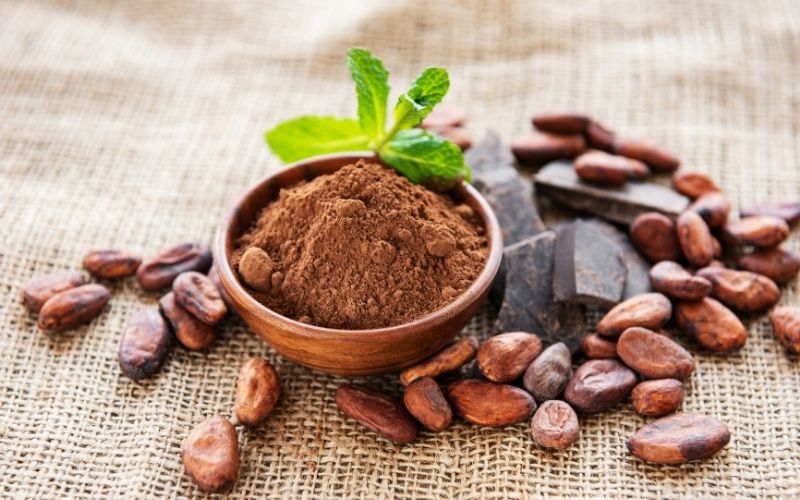
In a small double-blind, placebo-controlled study from 2014, fourteen acne-prone men between the ages of 18 and 35 were given capsules filled with either unsweetened 100% cocoa, gelatin powder, or a combination of the two to determine if chocolate and the total dose impacted acne.
Over a period of four weeks, thirteen out of the fourteen subjects showed a significant increase in the number and severity of the acne lesions (comedones, papules, pustules, and even nodules).
Therefore, this study concluded that consuming chocolate components such as cocoa and gelatin powder can increase and exacerbate the severity of acne.
A similar study in a different journal found that after eating 25 grams of 99% dark chocolate every day, 25 acne-prone men had an increased number of acne lesions and exacerbated severity of acne lesions after only two weeks into the study.
After four weeks, these changes were still present, and pretty much remained the same with very little difference in severity.
Another study from 2017 found that 54 college students with acne had more new lesions and exacerbated severity after only 48 hours of consuming chocolate compared to their peers who ate a comparable amount of jelly beans.
After a four-week washout period, there were no significant changes in the number and severity of acne lesions.
It can be quite difficult to tell why and how does cocoa exacerbates the severity of acne; however, some have theorized that cocoa triggers the immune system to react more aggressively to the acne-causing bacteria.
My Experience With Cutting Out Chocolate
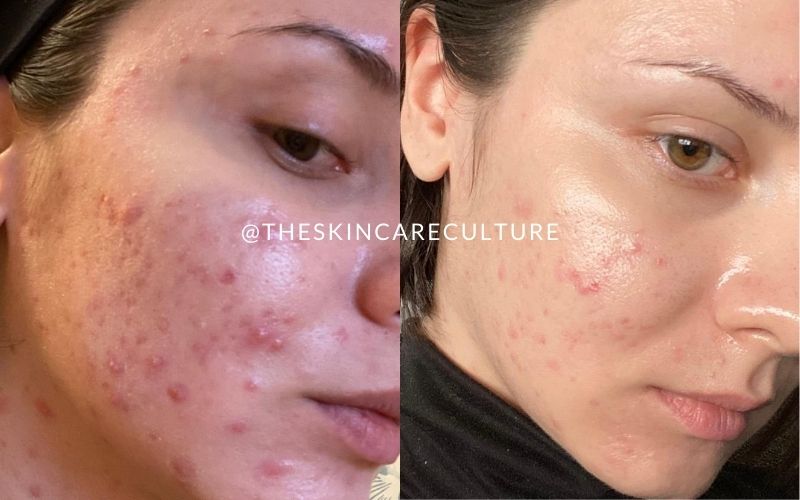
Since I started getting acne, my free time came down to looking for ways and products to incorporate or cut out in desperate need of a positive change on my skin.
Naturally, I also hoped that cutting out chocolate can yield this positive change I was seeking.
However, I’ve personally never been a sweet-loving maniac like some people I know, but I still decided to give it a try.
Cutting out chocolate didn’t make much difference for me; however, that doesn’t mean that it won’t do anything for you, and you should give it a try if you want but don’t be bummed if you don’t see any changes.
I’ve seen many people who experienced drastic changes after cutting out chocolate, sweets, and dairy; however, I didn’t experience the same thing.
But there is also a limitation to my experiment because I wasn’t consuming huge amounts of chocolate in the first place.
Perhaps if I started consuming a lot of chocolate, I could potentially see more acne, but I don’t want to risk going that far.
If you want to give chocolate and dairy a break, I encourage you to do so and monitor your changes carefully.
It’s also important not to have high expectations as this may lead to disappointment, so try to take a more experimental approach instead.
RELATED: How I Healed My Cystic Acne In 5 Days
Food and Acne FAQs:
Below, I will answer a couple of the most frequently asked questions I get regarding food and acne:
What Foods Help Clear Skin?
There isn’t a specific type of food that will clear your skin; however, having a good overall diet rich in antioxidant and fibrous foods can help get you a step closer to achieving your skin goals.
One of the most difficult dietary changes for me personally was introducing veggies into my meals. I absolutely hate veggies, and I have no problem admitting it.
However, I cut out the bad habit of neglecting the importance of veggies in my diet just because I didn’t like them and slowly got used to them.
Making this change really helped improve my cystic acne in a short amount of time, but it also improved my overall health and even made me feel better due to the healthy dose of antioxidants and fibers veggies contain.
Adding a few drops of lemon and lime helped change the flavor, and I could tolerate it better.
Additionally, besides veggies, there was fish – tuna and salmon in particular.
I never liked fish; however, I learned how to prepare a mean salmon dish, which was according to my taste and helped me get the necessary nutritious values I was missing, like omega 3, which happens to be incredibly important for brain function and healthy skin.
I also threw in a couple of different supplements into my daily routine, which is also something that had a major effect on my skin’s health.
Remember that the goal is not to be harsh on yourself and forcing yourself to eat healthily, or else.
The goal is to make tweaks and changes that will improve your lifestyle, not punish yourself by strictly eating rabbit food because you think it’s going to help clear your skin.
RELATED: 10 Things That Completely Changed My Skin
Which Foods Trigger Acne?
Typically foods with a high glycemic index (GI) have been mostly linked to being the cause behind acne due to triggering insulin, which stimulates the sebaceous glands to produce more and more oil that clogs your pores.
Foods that contain a high glycemic index (GI) are typically sugary foods such as:
- soft drinks
- sugary foods
- sweets
- sauces such as BBQ and ketchup
- salad dressings
Additionally, here’s a list of 60+ foods and their glycemic index that you can check out for more specific information.

My name is Simone and I am a certified skin specialist. I created this website to teach my readers how to take great care of their skin and I also like to occasionally share my honest opinions on skincare products I’ve tried. You can learn more about me here.

Thanks For the Blog You have provided very important information.